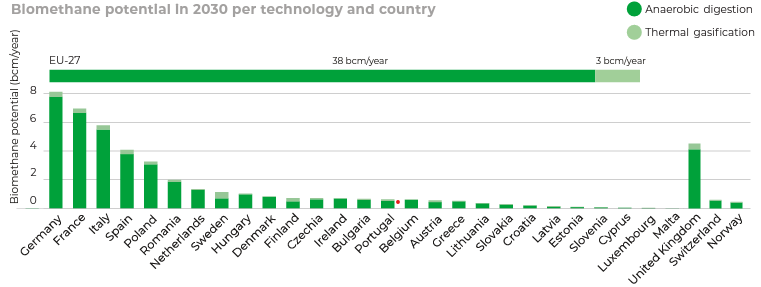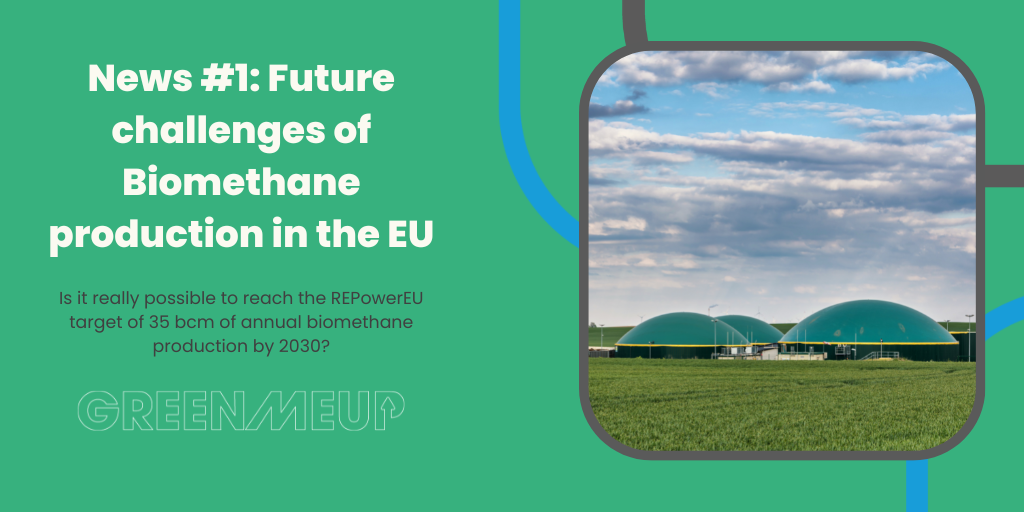Is it really possible to reach the REPowerEU target of 35 bcm of annual biomethane production by 2030?
The European Commission has recognized the advantages of biomethane production, and thus decided to challenge the biomethane market by setting the ambitious production’s target of 35 bcm per year by 2030 in the REPowerEU plan.
At the moment, biomethane production accounts to 3 bcm per year: is there a chance to tenfold this amount by 2030?
According to the latest estimations, enough sustainable feedstocks are available in the EU-27 for meeting the REPowerEU 2030 target of 35 bcm per year: with these amounts, annual production could reach 41 bcm per year in 2030, and 151 bcm in 2050.
As a consequence, reaching the REPowerEU target by 2030 is ambitious, but achievable.

Feedstocks are the key factors for reaching this objective.
The most important ones are manure, agricultural residues and feedstock from sequential cropping. These ones are deployed in the anaerobic digestion technology, the most used for biomethane, amounting to 93% of production in the EU. According to the estimates, anaerobic digestion potentials will amount to 38.1 bcm by 2030, with a potential increase to 98 bcm by 2050.
Together with anaerobic digestion, another important technology for producing biomethane is thermal gasification: in this case, the main feedstocks used are forestry residues and wood waste, which represents 60% of the potential feedstocks available. Here, a potential of 2.9 bcm is estimated by 2030, increasing to 67.1 bcm in 2050.
These production potentials vary significantly among countries: the EU-27 countries with the highest potentials are broadly similar and include France, Germany, Italy, Spain and Poland. Together, they represent over 50% of the total biomethane potential.
It is evident that there’s an uneven uptake of biomethane among EU countries. This gap represents one of the main challenges for its deployment: feedstock availability won’t be sufficient without the implementation of proper policies aimed at encouraging its production and use.
To reach the REPowerEU target, the EU needs to implement a strong and functioning biomethane strategy, with incentives for end-users and proper permissions for its implementation in the market, in order to align the deployment of biomethane in EU member states.

